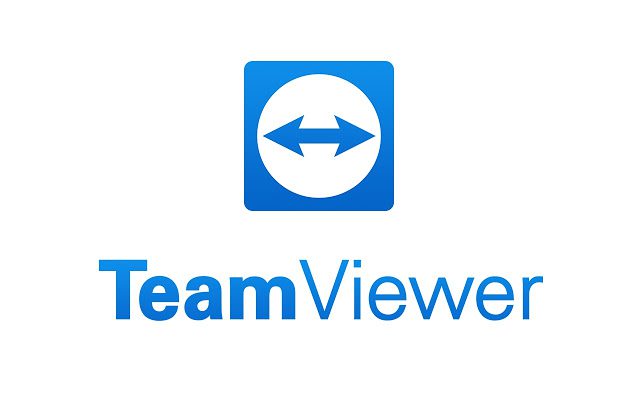If you want to access your server with installed TeamViewer Host via TeamViewer with full access rights, you might know the following problem: The user only expects a black screen and the message “this screen cannot be captured at the moment. This is due to to fast user switching or a disconnected/minimized remote desktop session”. You might think the solution to this problem is in the TeamViewer settings. Most of the time far from it. The solution is to distinguish between the server ID and the user ID of the running TeamViewer.
How to download teamviewer without adminstrator rightsIts Very Simple. Admin By Request intercepted the browsers' request to elevate with admin rights to install the software and then executed the installation sandboxed with admin privileges, but without the user having admin rights. Nothing in the process was different to the user than when the user had admin rights.

A TeamViewer service installed as a host can be accessed in two ways:
1. via the so-called User-ID
2. via the so-called Server-ID
And this is exactly where the core of the problem lies.
If an administrator installs the TeamViewer host for unattended use on a server, then he probably clicks directly on the TeamViewer icon after the installation, opens the graphical user interface and notes the ID displayed there. However, this ID displayed in the Windows session is the user ID. A connection ID that only promises success if the calling user is actively logged in.

If this administrator now tries to access this ID via TeamViewer, a connection is established, but only a black screen appears with the message “The screen cannot be tapped at the moment. The reason for this is probably Fast User Switching or a separate remote desktop session.
If the administrator establishes an RDP connection to this computer at the same time or logs on locally to the computer, then his user session is active and he can operate the server via TeamViewer. But only as long as his Windows login is active.
Usually you don’t want this behavior, because you install the TeamViewer host as a service, so that you can access the server independently from the registered user.
The solution is to use the so-called server ID. This differs from the user ID of the administrator user, which was displayed prominently before.
The server ID enables a login independent of user sessions and brings the user to the login screen of the Windows server in TeamViewer.
The server ID can be displayed by clicking on the lamp symbol behind the user ID in the TeamViewer graphical user interface.
The prerequisite for this is that the multi-user mode has been activated in the TeamViewer settings.
Now some fun for the admin…
Keine Produkte gefunden.
Admin Warnweste - Einheitsgröße bis XXL- Einheistgröße XXL
- Vorne und Hinten Flexdruck (kein Reflex!!)
All the links in this text are Amazon Affiliate Links, and by clicking on an affiliate link I will earn a percentage of your subsequent Amazon purchases. However, this circumstance does not influence the background of my product recommendation. This product recommendation is independent, honest and sincere.
Bei allen genannten Links handelt es sich um Amazon-Affiliate-Links. Durch einen Klick auf einen Affiliate-Link werde ich prozentual an Euren darauf folgenden Amazon-Einkäufen beteiligt. Dieser Umstand beeinflusst aber nicht die Hintergründe meiner Produktempfehlung. Diese Produktempfehlung erfolgt unabhängig, ehrlich und aufrichtig.
Setup Unattended Access with Teamviewer: I like to have full control of all of my computers, even when I am not at the computer, this is where Teamviewer comes in, if you like to remote into all your computers at any time you want, maybe to transfer files or run some daily maintenance tasks on that machine or give support to a friend or family member vie remote support. Where I find Unattended Access handy, is when I want to remote close or restart my server, this makes my life easy because the server has no monitor plugged in, so we have no desktop display to shutdown the computer.
How to Setup Unattended Access with Teamviewer:
Teamviewer is free software for non-commercial use, which can be used to access remote computers.
1. Download what version of Teamviewer you need. Teamviewer is available for Windows, Mac, Linux and mobile devices.
2. Once download click TeamViewer_Setup_en.exe on the machine you want to connect to.
3. Click Yes to Teamviewer User Account Control
4. Click Run to start install process
- Select Basic installation > Personal / Non-commercial use > Show advanced settings.
- Then click Accept -next
5. Select the installation directory you want to install Teamviewer in.
- Check-mark any other extras you want to install.
- You can leave as default and click finish if you want.
- Teamviewer will start to install.
6. Open Teamviewer then click on Connection > Setup Unattended Access.
7. Setup-unattended-access windows will open. Click on the Next button on the next screen.
8. Define Personal password windows will open with options to set the computer name and password for remote access.
9. Add this computer to Computers & Contacts will open. Click I don’t want to create a TeamViewer account now.
- You can set this up later.
10. Completing the wizard lists your Teamviewer ID.
- you are now ready to use remote access. (Unattended Access)
11. Now to connect to unattended access machine you just setup, run Teamviewer on any other machine and enter your ID in the Partner ID field, and then click on the “Connect to Partner” button.
12. When your prompted for a password. Enter the password you used for setup during the above process and click Log On button.
Install Teamviewer Without Admin Rights Windows 7
- Advanced option allows you to select the type of access you want.
Install Teamviewer Without Admin Rights Windows 10
That’s it. You just setup a Unattended Access with Teamviewer. If you found this guide helpful, please share with your friends and family.